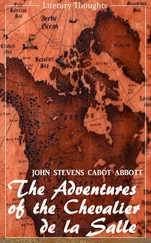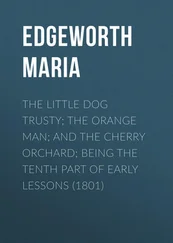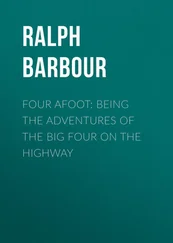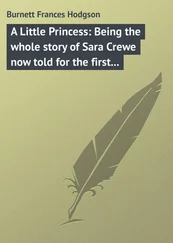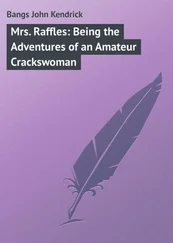“Maybe it is a giant buffalo,” suggests Lumphy.
“Maybe it is a dump truck!” squeals StingRay. “A big orange dump truck tipping out piles of rotten groceries on top of us,
and trapping us with the garbage-eating
sharks
and the throw-up smell!”
“Wouldn’t a dump truck be louder?” asks Plastic, though she is starting to think StingRay might have a point. “I’m sure it’s not a dump truck.”
… …
The backpack thumps down again with a bang. “I would like to be warned,” moans Lumphy. “Sudden bumps make everything worse than it already is.”
“The Girl doesn’t love us and she’s trying to get rid of us!” cries StingRay in a panic.
The backpack opens. The rumbly noise gets louder, and the light is very bright—so bright that StingRay, Plastic, and Lumphy have to squinch up their eyes and take deep breaths before they can see where they are. A pair of warm arms takes them all out of the dark, wet-bathing-suit smell together.
The three toys look around. There are small chairs, a sunny window, and a circle of fidgety faces.
It is not the vet.
It is not the zoo.
It is not the dump. (They are pretty sure.)
But where is it?
The rumbly noise surges up. A grown-up asks everyone to Please Be Quiet Now. And then comes a familiar voice.
“These are my best friends,” says the Little Girl who owns the backpack and sleeps in the high bed with the fluffy pillows. “My best friends in the world. That’s why I brought them to show-and-tell.”
“Welcome,” says the teacher.
Sticky, unfamiliar fingers pat Lumphy’s head and StingRay’s plush tail.
Plastic is held up for all to admire. “We are here to be shown and told,” she whispers to StingRay and Lumphy, feeling quite bouncy as she looks around at the schoolroom. “Not to be thrown away or put under the X-ray machine!”
The teacher says Lumphy looks a lot like a real buffalo. (Lumphy wonders what the teacher means by “real,” but he is too happy to worry much about it.)
“We’re special!” whispers StingRay. “We’re her best friends!”
“I knew it would be something nice,” says Plastic.
… …
Funny, but the ride home is not so uncomfortable. The smell is still there, but the backpack seems rather cozy. Plastic has herself a nap.
StingRay isn’t worried about vets and zoos and garbage dumps anymore; she curls herself into a ball by Lumphy’s buffalo stomach. “The Little Girl loves us,” she tells him. “I knew it all along, really. I just didn’t want to say.”
Lumphy licks StingRay’s head once, and settles down to wait. When he knows where he is going, traveling isn’t so bad. And right now, he is going home.
CHAPTER TWO

The Serious Problem of Plastic-ness
The room with the high bed and the fluffy pillows has bookshelves. Plastic never paid much attention to them before, but now she thinks they are interesting. Most of the shelves hold storybooks, but the bottom one has schoolbooks on it: books about animals, the meanings of words, the size of oceans, and the ways of plants.
“When you’ve been to school like I have,” says StingRay, interrupting one evening as Plastic is looking curiously at the shelves, “—when you’ve gone to show-and-tell and seen the classroom and all the important things they have in there, then you know that books are a place to find out truths.”
“Truths about what?” asks Plastic.
“Just truths,” says StingRay, positioning herself proudly in front of the books. “Like what is two and two?”
“Four,” pipes up Lumphy, who is watching the sun set from the windowsill nearby.
“If we want the answer,” explains StingRay, as if she hasn’t heard him, “we can look it up. Truths like these are in books. That’s what you learn at school, if you’ve been to school like I have.”
“We were all at school,” mutters Lumphy, still on the windowsill.
Plastic wants to know which book would have that truth inside, about two and two.
“A book on money,” says StingRay. “It tells you how to be rich and famous
and how to fill up your really big swimming
pool with liquid gold,
and how to eat expensive chocolates for
breakfast,
and have banquets for hundreds of your best
friends,
and swing from chandeliers made from
diamonds.
Also, how to count numbers together, if that is the kind of truth you are after.”
“How is that a truth?” calls Lumphy.
“Okay, a fact, then. Facts are in books. If you’ve been to school.”
“Ahem,” coughs Lumphy. “I was right there next to you. Don’t you remember?”
“Where?”
“At school.”
“Time for bed,” StingRay says importantly.
The Little Girl comes into the bedroom and lifts her up to sleep on the high bed with the fluffy pillows, while Lumphy and Plastic stay where they are.
… …
“Let’s find the book on money,” suggests Plastic, when the lights are out and both StingRay and the Girl are asleep.
Lumphy makes a grouchy noise. Now that it’s night and the Girl can’t see him moving around, he wants to go down the hall to visit TukTuk, the yellow towel who lives in the bathroom. TukTuk always has something interesting to say. She sees a lot of strange behavior in her life as a towel, although she doesn’t get out much. Lumphy particularly likes to hear about tooth brushing and fingernail clipping, things he is not sure he properly understands. “I’m busy,” he tells Plastic.
So Plastic tries to get the one-eared sheep to look for the money book.
“Is there anything about grass in it?” Sheep wants to know.
“I don’t think so. It’s the truths and facts of liquid gold swimming pools.”
“Anything about clover?”
“Probably not,” Plastic is forced to admit.
“If it’s not going to be interesting, I’d just as soon skip it,” Sheep says kindly. She goes to play marbles with the toy mice.
Plastic looks at the books by herself, reading the titles on the spines. One explains the meanings of words. One is full of maps. Another is about the wonderful world of plants. But there isn’t any book on money or gold swimming pools—and even if there was one, Plastic couldn’t pull it out from the shelf.
Only one book lies open on the floor so that she can read it: a book about animals, with pictures and details about how they live, what they eat, and where they sleep at night.
Plastic finds the part about stingrays. They live in the ocean and flap their flipper-wings like birds in the sky. She reads about sheep and how their woolly coats get shorn. She reads about mice, who are part of the rodent family. And she reads a good deal about buffaloes and how they run around in herds.
“Ooh,” she realizes. “I can read about plastics!”
But plastics aren’t there.
She looks again.
They still aren’t there.
Then Plastic goes page by page through the animal book, looking at every picture of every single animal.
None of them looks like her.
Ladybugs are round and red, but Plastic doesn’t have wings like a ladybug.
Turtles are round when their legs are inside their shells, but Plastic does not have a hard shell, or any kind of shell at all.
Hedgehogs are round when they curl themselves in balls, but Plastic is not spiny like a hedgehog.
People say foxes are red—but really they are much more orange, and anyway, Plastic knows she is not a fox. She is not sure she even has a nose.
Читать дальше



